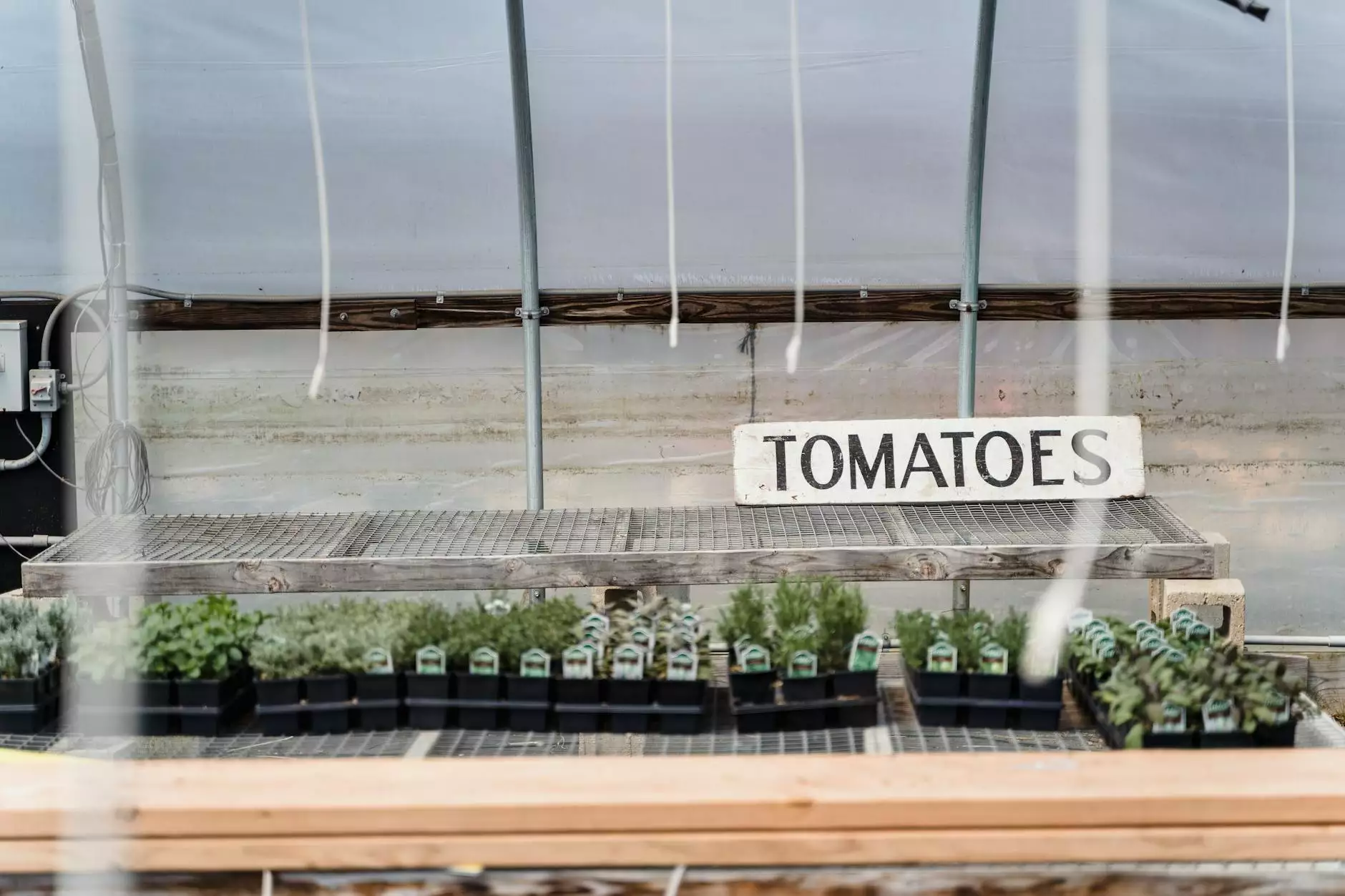How to Train Your Tomatoes - Ted Lare - Design & Build

Introduction
Welcome to the comprehensive guide on training tomatoes by Cutting Hedge Services! Tomatoes are one of the most popular and rewarding plants to grow, but without proper training, they can become unruly and hinder their growth potential. In this guide, we will explore various techniques and tips to help you train your tomatoes for optimal growth and a bountiful harvest.
Why Train Your Tomatoes?
Training your tomatoes is crucial for several reasons. Firstly, it promotes better air circulation, reducing the chances of diseases such as blight and mildew. Secondly, it helps the plants receive adequate sunlight, which is essential for photosynthesis and fruit development. Lastly, training allows for easier plant maintenance, including pruning, watering, and harvesting.
1. Selecting the Right Tomato Varieties
Before diving into training techniques, it's important to choose appropriate tomato varieties that are suitable for training. Look for determinate varieties that naturally have a bushier growth habit, or indeterminate varieties that have more vine-like growth. Determinate varieties are easier to manage, while indeterminate varieties benefit from advanced training methods like trellising or stake support.
2. Staking and Supporting
Staking and supporting your tomato plants is one of the most common training methods. This technique involves using stakes, cages, or trellises to support the plant as it grows. It helps prevent the plant from sprawling on the ground and also offers better air circulation.
To stake your tomatoes, follow these steps:
- Drive a sturdy stake into the ground next to each tomato plant.
- Gently tie the main stem of the plant to the stake using soft plant ties or twine.
- As the plant grows, continue tying it to the stake at regular intervals to provide support.
- Prune off any side shoots or suckers that emerge from the leaf axils to focus the plant's energy on fruit production.
3. Using Tomato Cages
Tomato cages are another effective method for training tomatoes, especially for indeterminate varieties. These cylindrical wire structures provide support to the plant from all sides and can be easily installed before planting.
To use tomato cages:
- Place the cage over the young tomato plant, ensuring it is centered.
- Gently guide the plant through the openings in the cage as it grows.
- Prune off any excessive foliage to allow air circulation and prevent overcrowding.
- Regularly check and adjust the plant's growth within the cage to prevent tangling.
4. Trellising Techniques
For gardeners seeking more advanced training methods, trellising is an excellent technique that allows for vertical growth and maximizes space utilization. There are several types of trellises you can use, including A-frame trellises, T-shaped trellises, or even single-wire systems.
To trellis your tomatoes:
- Install the trellis system before planting the tomatoes, ensuring it is sturdy and securely anchored.
- As the plants grow, gently tie the main stem to the trellis using plant ties or soft twine, ensuring it remains upright.
- Guide the lateral branches towards the trellis, making sure they are loosely tied for support.
- Prune any unnecessary foliage to direct the plant's energy towards fruit development.
5. Pruning Techniques
Pruning is a valuable aspect of tomato training, as it helps maintain plant health, prevents disease, and improves fruit quality. While pruning techniques may vary depending on the desired results, here's a general guide:
- Regularly remove any damaged, diseased, or yellowing leaves from the plant.
- Pinch off suckers or non-fruiting branches that emerge from the leaf axils.
- Ensure good airflow by thinning out excessive foliage, allowing sunlight to reach the lower leaves and improving disease resistance.
- Monitor the plant regularly and prune as needed to maintain the desired shape and prevent overcrowding.
Conclusion
Congratulations! You have now learned various methods for training your tomatoes for optimal growth and a bountiful harvest. Remember, proper training allows for better air circulation, sunlight exposure, and easier plant maintenance. Experiment with different techniques to find what works best for your garden and enjoy the rewards of delicious homegrown tomatoes!
For more gardening tips and expert advice, visit Cutting Hedge Services at cuttinghedgeservicesllc.com.










